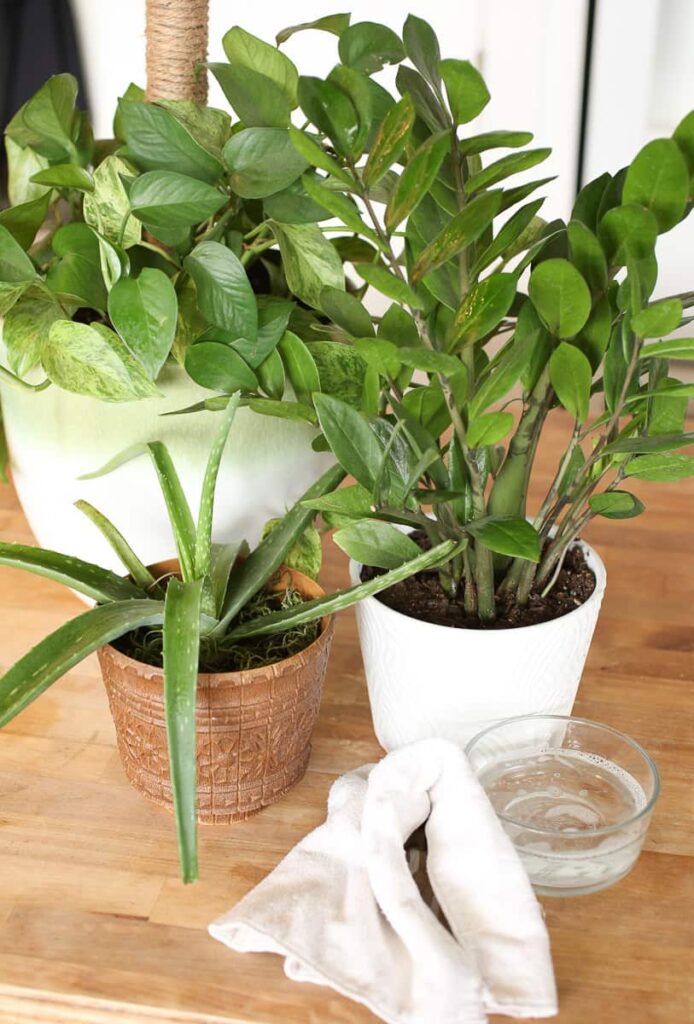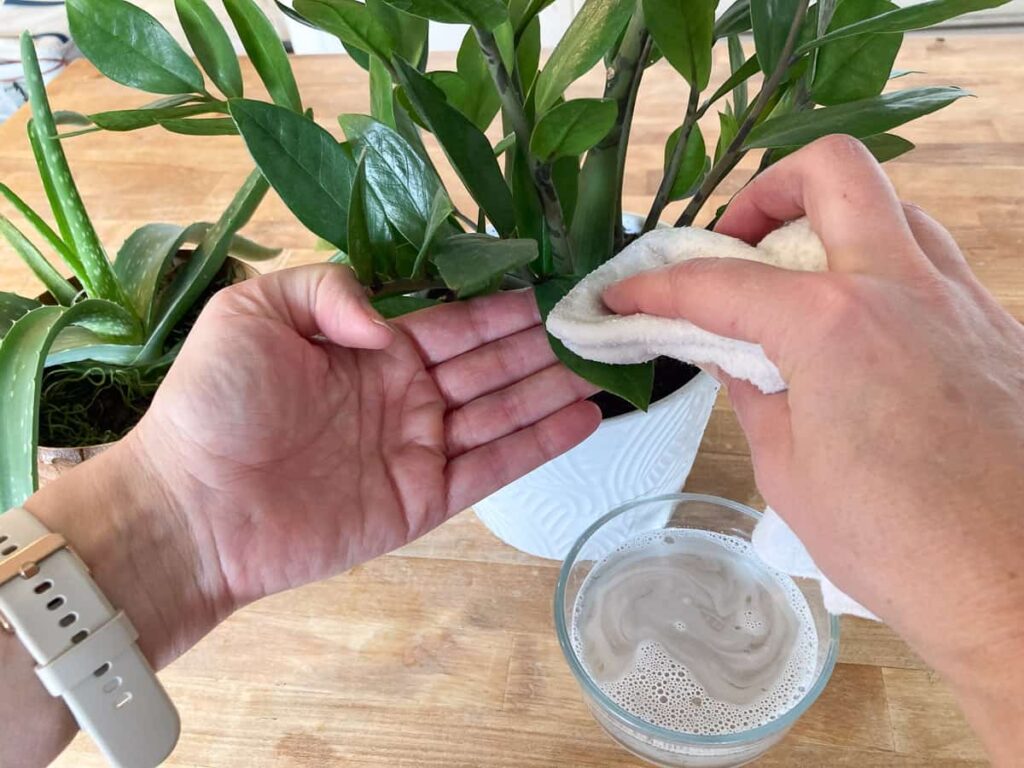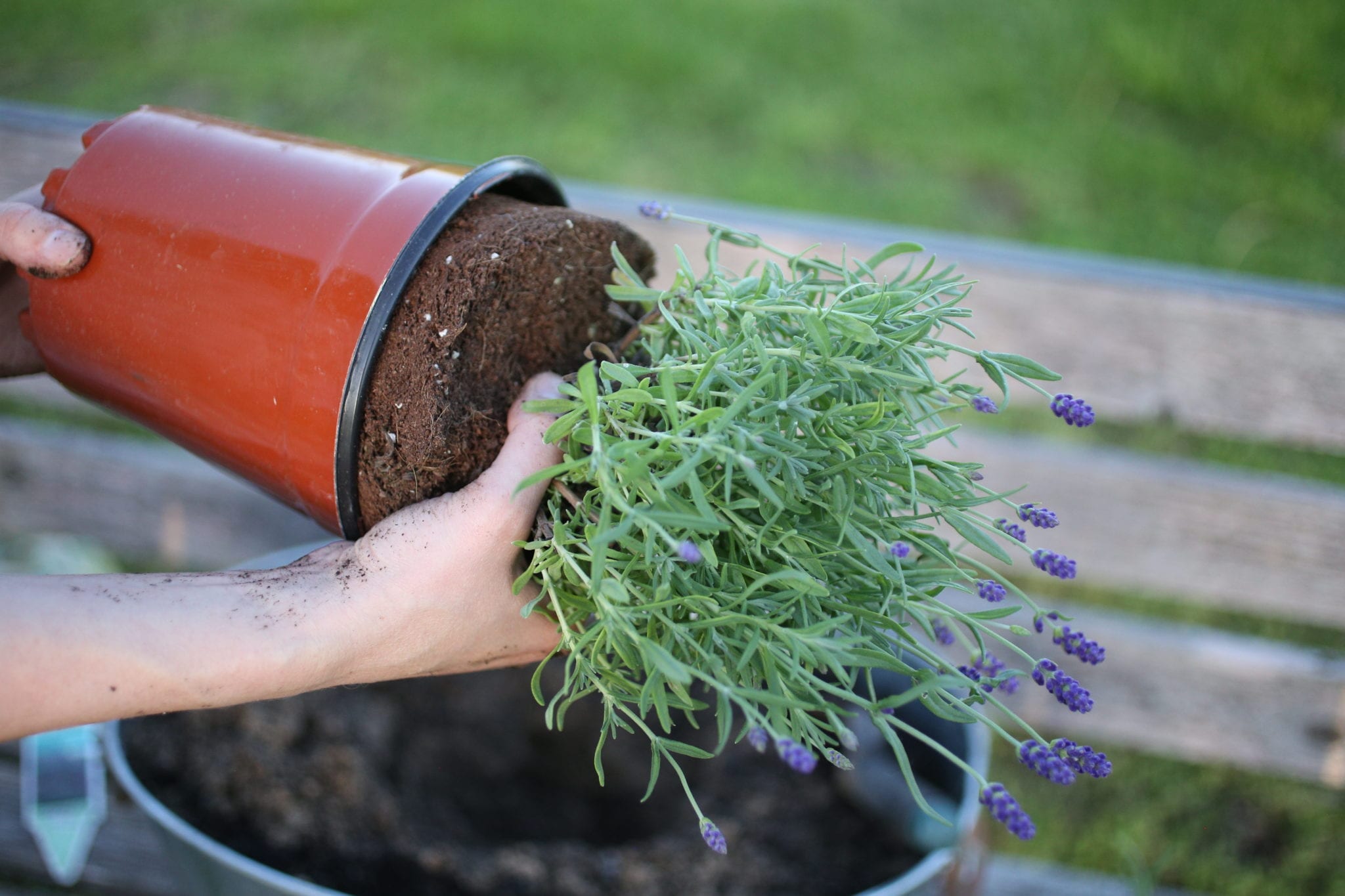Cleaning Plant Leaves | A Guide for Caring for Houseplants
Keeping your houseplants healthy and thriving requires more than just watering and sunlight. Regularly cleaning your plant leaves is a crucial aspect of plant care that often gets overlooked. Dust, pollutants, and pests can accumulate on the surface of leaves, hindering the plant’s ability to photosynthesize effectively. In this guide, we’ll talk about the importance of cleaning plant leaves and provide you with practical tips on how to do it properly.
This post contains affiliate links

Why Clean Plant Leaves?
- Improved Photosynthesis:
- Clean leaves facilitate better absorption of sunlight, optimizing the process of photosynthesis. This is crucial for the production of energy and nutrients that sustain the plant’s growth.
- Enhanced Air Circulation:
- Dust and debris on leaves can impede air circulation. Regular cleaning promotes better airflow around the plant, reducing the risk of fungal infections and other diseases.
- Pest Prevention:
- Insects and pests often find refuge on dirty leaves. Cleaning removes these unwanted guests and prevents the infestation from spreading.
- Aesthetics:
- Clean leaves contribute to a better aesthetic, clean dust free leaves look so fresh. The natural shine and vibrancy of healthy leaves can significantly enhance the overall beauty of your plants.

How to Clean Plant Leaves:
Gentle Spraying
- Start by gently spraying your plant leaves with water. This helps to loosen any accumulated dust and dirt. Use a spray bottle and regularly spray the leaves and wipe off the dust. I do a bulk spraying when my plants need cleaning and they need water. Be careful spraying succulents or cactus that don’t need lots of water. Only do this about once a month or so.
- Use a hose with a gentle spray setting to avoid damaging delicate foliage. A great way to do this is to carry plants to the bathtub, shower, or kitchen sink. This eliminates a water mess on your floors or shelves. Do this early in the day so the plants have time to drain and dry off before you need to use the tub or shower at night.
- I prefer to do the spraying in my kitchen sink. I have this rack in the bottom of my sink and I love that it lets the plants drain while sitting there for a few hours. They make all different shapes and sizes of racks. My daughter has so many plants that she has to use the bathtub if she does them all at once.
- Weather permitting, you could also carry your houseplants outside and give them a nice gentle spray with the hose. Use a nozzle like this one for a gentle spray. Be sure to bring them back in before nightfall especially if the temperatures will be dipping low at night.



Hand Wiping
- For larger plants or those with broad leaves, fill a bowl with water and a few drops of dish soap. Using a soft, damp cloth or sponge, gently wipe both sides of each leaf. Be sure to support the leaf from underneath to prevent breakage.
- You could also fill a spray bottle with a bit of soapy water or one of the solutions listed below and spray the plant’s leaves and then wipe them off.

Dusting
- You could also dust the leaves with a dry paint brush or feather duster. This is a quick and easy way to dust the plants weekly while they are in place. That way you aren’t overwatering them by spraying them in the sink if they don’t need it.
- Be sure to support the leaves from underneath as you dust them.


Natural Cleaning Solutions for Plant Leaves
- Water and Liquid Soap
- Mix a solution of water and a mild liquid soap (make your own dish soap) or dish detergent. You can spray the leaves with this mixture and then gently wipe off with a soft dry cloth. This not only cleans the leaves but can also deter pests.
- Neem Oil Solution:
- Neem oil is known for its natural insecticidal properties. Mix a small amount of neem oil with water and a drop of dish soap. Apply this solution to the leaves using a soft cloth or spray bottle. See my recipe for homemade fly spray using neem here.
- Vinegar and Water Solution:
- Go easy with this, just a little bit of vinegar is good, but too much can damage your plant’s leaves. Use only 1 tsp of vinegar to a gallon of water. This helps to clean hard water spots or buildup from leaf shine.
- Avoid Harsh Chemicals:
- Using harsh chemicals or cleaning products can damage the plant’s delicate foliage. Stick to natural and mild solutions to ensure the well-being of your plants.
- Say no to Leaf Shine. The waxes in the products can interfere with the plant’s natural function and also just attract more dust and dirt.
- Regular Inspection:
- Make leaf cleaning a routine part of your plant care. Regularly inspect your plants for signs of dust, pests, or diseases, and take prompt action to address any issues.
Cleaning your plant leaves is a simple yet effective way to ensure the health and vitality of your garden. By incorporating these cleaning practices into your plant care routine, you’ll not only enhance the aesthetic appeal of your plants but also contribute to their overall well-being. Remember, a clean plant is a happy plant!

Love Plants? Check out these posts!
9 Ways to Get Free Plants for Your Home or Garden
Pallet Wood Succulent Planter–How To






